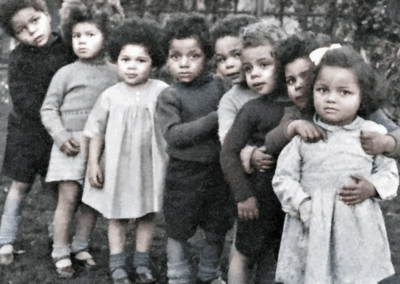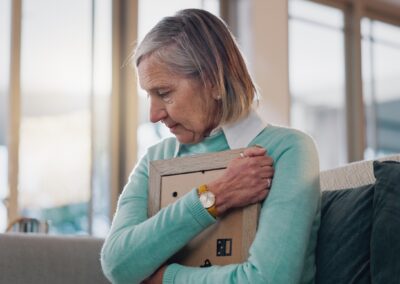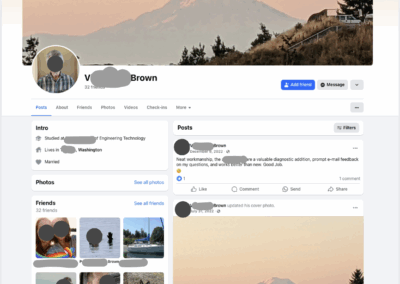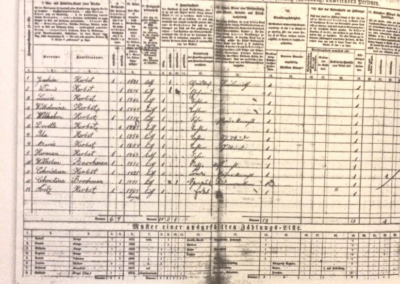The following blog post is part of a series highlighting key aspects of the work of DNA Doe Project’s investigative genetic genealogists showcased in the documentary Naming the Dead, available on NatGeoTV, Hulu, and Disney+.
While watching the TV program Naming the Dead you may have noticed volunteers scrolling through pages of materials, looking for names, information, etc. Those materials–the newspapers, the census records, the crumpled up notes smoothed out and scanned by the family’s hobby genealogist—are what we called primary sources.
Primary sources are particularly helpful because these are the sources that were created at the time of the people we are looking for and hoping to connect to our Does. The combination of science and technology with historical research and online sleuthing is what makes investigative genetic genealogy so effective and successful—if you have low DNA matches, research can help make up for that. If there aren’t a lot of records available from a particular line, you can use more advanced DNA tools to try to hone in more on particular chromosomes or clusters. It’s a truly interdisciplinary field.
And it isn’t just documents from the United States that volunteers need to be mindful of. DDP cases necessitate that we be able to access primary sources from many countries. The DNA Doe Project is lucky to have volunteers from a wide variety of backgrounds and cultures and we utilize that knowledge. As one volunteer, I have been on cases where I have needed to access records from Canada, Italy, Croatia, Ecuador…and the list goes on. Each case can give you a mini education in records and resources from other countries.
As a librarian and genealogist, I relish the research aspect of each case…probably a little too much (I can get distracted by other newspaper articles very quickly). My favorite find of a primary source occurred during one of my first cases with the DNA Doe Project, on a case called Leo Jane Doe. Once a candidate was identified, our case leader put her name into newspapers.com, and a wealth of information appeared. Suddenly, Leo Jane Doe was no longer Leo Jane Doe-but a woman named Diane Minor, a former beauty queen and talented singer, who even went on to produce an actual record. Reading about her rich life and experiences, as with all of our cases, it really brought back to me again that the “unidentified” are people with stories and backgrounds that are unknown…and waiting to be rediscovered.
For more information about how you can help the DNA Doe Project, please click here.





